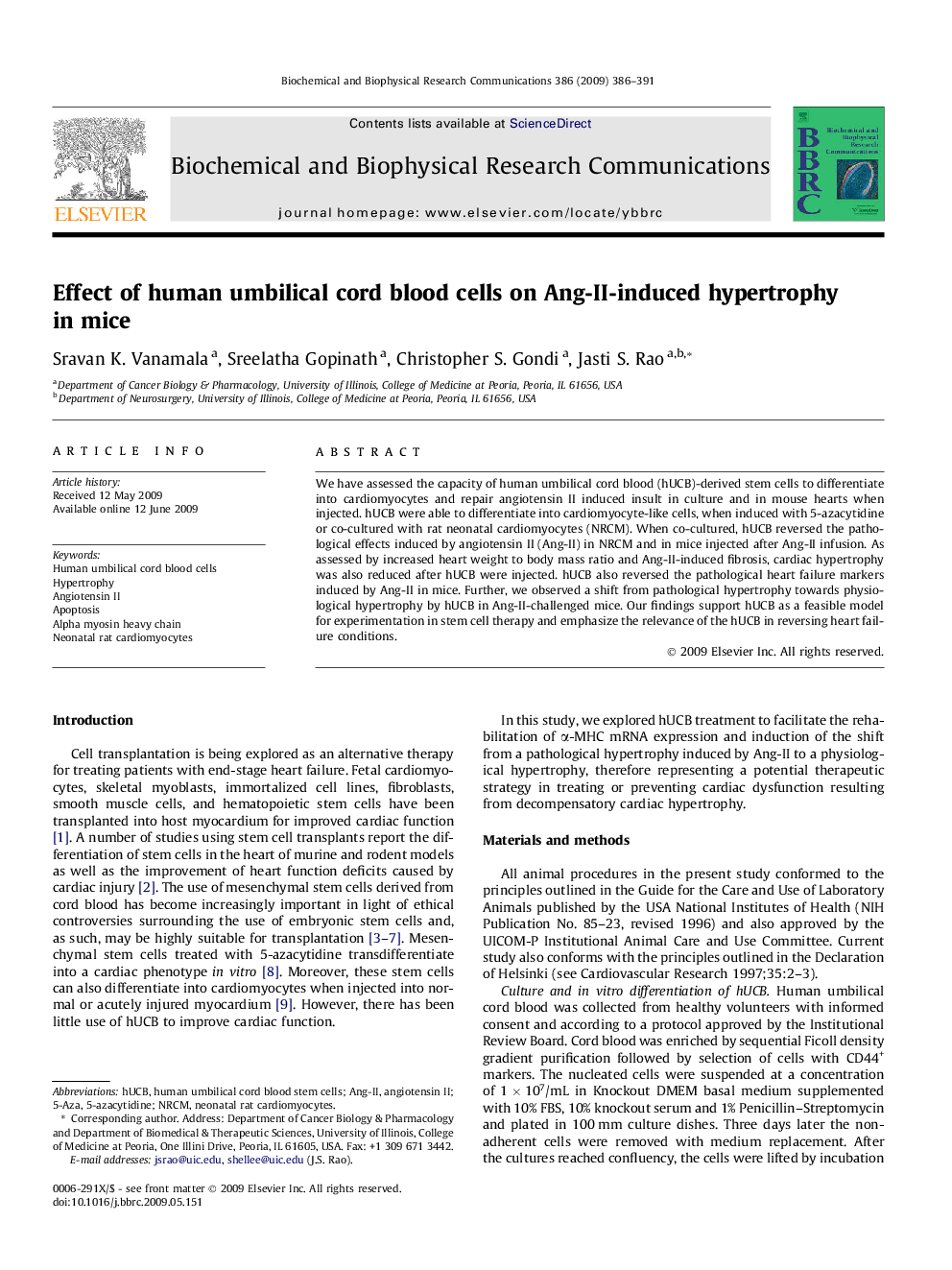| Article ID | Journal | Published Year | Pages | File Type |
|---|---|---|---|---|
| 1933350 | Biochemical and Biophysical Research Communications | 2009 | 6 Pages |
We have assessed the capacity of human umbilical cord blood (hUCB)-derived stem cells to differentiate into cardiomyocytes and repair angiotensin II induced insult in culture and in mouse hearts when injected. hUCB were able to differentiate into cardiomyocyte-like cells, when induced with 5-azacytidine or co-cultured with rat neonatal cardiomyocytes (NRCM). When co-cultured, hUCB reversed the pathological effects induced by angiotensin II (Ang-II) in NRCM and in mice injected after Ang-II infusion. As assessed by increased heart weight to body mass ratio and Ang-II-induced fibrosis, cardiac hypertrophy was also reduced after hUCB were injected. hUCB also reversed the pathological heart failure markers induced by Ang-II in mice. Further, we observed a shift from pathological hypertrophy towards physiological hypertrophy by hUCB in Ang-II-challenged mice. Our findings support hUCB as a feasible model for experimentation in stem cell therapy and emphasize the relevance of the hUCB in reversing heart failure conditions.
